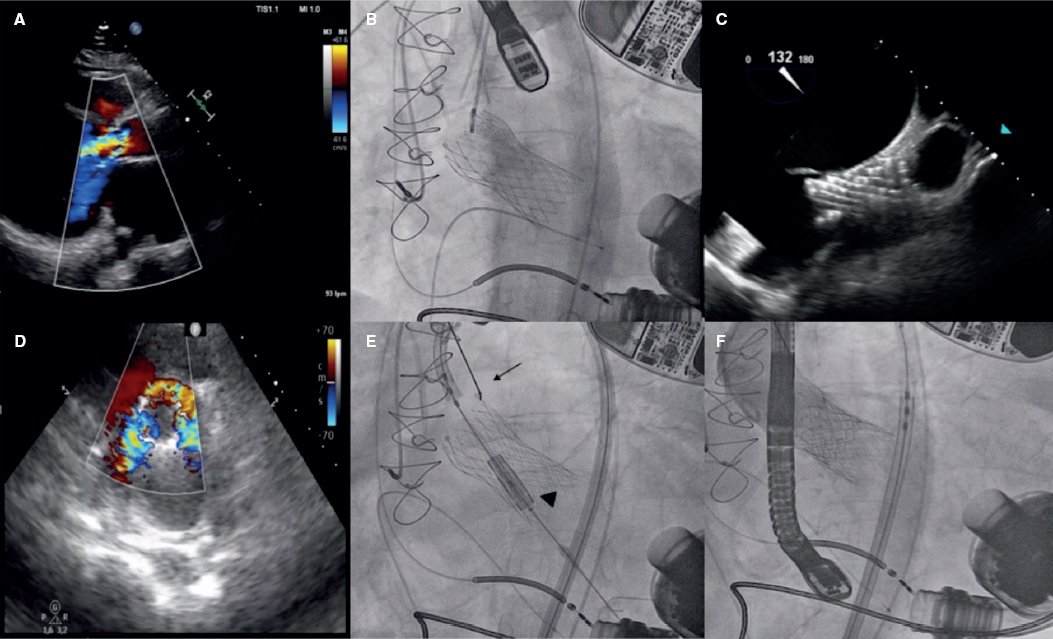| 1 x afterRenderModule mod_custom (Most read) (1.07MB) (38.78%) | 443ms |
| 1 x afterRenderModule mod_custom (Home Superior Izquierda -EN) (5.03MB) (9.05%) | 103ms |
| 1 x afterRenderComponent com_content (147.09KB) (7.16%) | 81.76ms |
| 1 x afterRenderModule mod_custom (Home Inferior Derecha -EN) (3.59MB) (6.43%) | 73.42ms |
| 1 x afterRender (999.67KB) (5.76%) | 65.78ms |
| 1 x afterInitialise (3.34MB) (3.3%) | 37.68ms |
| 1 x Before Access::getAssetRules (id:8 name:com_content) (1.12MB) (2.62%) | 29.91ms |
| 1 x afterRenderModule mod_custom (Home Debate Enlaces EN) (1.43MB) (2.46%) | 28.13ms |
| 1 x afterRenderModule mod_custom (Most shared) (5.28MB) (2.06%) | 23.50ms |
| 1 x afterRenderModule mod_custom (Article Herramientas Estadísticas - ENG) (689.49KB) (1.93%) | 22.07ms |
| 1 x beforeRenderRawModule mod_breadcrumbs (Breadcrumbs EN) (1.26MB) (1.69%) | 19.27ms |
| 1 x afterRoute (967.79KB) (1.62%) | 18.52ms |
| 1 x afterRenderModule mod_custom (Header Article -EN) (500.33KB) (1.23%) | 14.07ms |
| 1 x afterRenderRawModule mod_dms3_refs (Article Herramientas Exportar - ENG) (67.3KB) (0.72%) | 8.24ms |
| 1 x afterRenderModule mod_custom (Article - Referencia ) (267.38KB) (0.65%) | 7.42ms |
| 1 x afterRenderModule mod_custom (Article Herramientas Traducción - ENG) (255.91KB) (0.65%) | 7.41ms |
| 1 x Before Access::getAssetRules (id:1 name:root.1) (318.46KB) (0.62%) | 7.10ms |
| 1 x afterRenderModule mod_custom (Debate Title) (380.55KB) (0.61%) | 6.92ms |
| 1 x afterRenderModule mod_custom (Article DOI activo) (256.69KB) (0.6%) | 6.86ms |
| 1 x afterRenderModule mod_custom (Foto Autor) (921KB) (0.6%) | 6.81ms |
| 1 x afterRenderModule mod_custom (Article Herramientas Compartir -EN) (293.91KB) (0.58%) | 6.62ms |
| 1 x afterRenderModule mod_custom (Caso clínico 1) (163.52KB) (0.55%) | 6.29ms |
| 1 x afterRenderModule mod_custom (Caso clínico 2) (163.52KB) (0.54%) | 6.14ms |
| 1 x afterRenderModule mod_custom (Article - Comments Section) (113KB) (0.51%) | 5.88ms |
| 1 x afterDispatch (365.66KB) (0.49%) | 5.60ms |
| 1 x afterRenderModule mod_custom (Article Category -EN) (211.59KB) (0.48%) | 5.51ms |
| 1 x afterRenderModule mod_custom (Article Authors) (153.57KB) (0.44%) | 5.03ms |
| 1 x afterRenderModule mod_custom (Article Related contents EN) (167.87KB) (0.44%) | 4.99ms |
| 1 x afterRenderModule mod_custom (Article Herramientas Material Adicional) (169.11KB) (0.44%) | 4.97ms |
| 1 x afterRenderModule mod_custom (Innovacion Herramientas Compartir -EN) (203.33KB) (0.43%) | 4.95ms |
| 1 x afterRenderModule mod_custom (Article Subtitulo) (150.02KB) (0.42%) | 4.78ms |
| 1 x afterRenderModule mod_custom (Article Translated Title) (148.97KB) (0.41%) | 4.72ms |
| 1 x afterRenderModule mod_custom (Article Title) (139.44KB) (0.39%) | 4.49ms |
| 1 x afterRenderModule mod_custom (Innovacion Herramientas Traducción EN) (140.4KB) (0.37%) | 4.21ms |
| 1 x afterRenderModule mod_custom (Innovacion Herramientas Estadísticas -EN) (129.22KB) (0.37%) | 4.18ms |
| 1 x afterRenderModule mod_custom (Article Herramientas Descargar - ENG) (118.57KB) (0.36%) | 4.15ms |
| 1 x afterRenderModule mod_custom (EMAIL Y TWITTER INGLES) (120.23KB) (0.35%) | 4.05ms |
| 1 x afterRenderModule mod_custom (Article Herramientas Imprimir -EN) (119.05KB) (0.35%) | 4.03ms |
| 1 x afterRenderModule mod_custom (Innovacion Herramientas Imprimir -EN) (118.89KB) (0.35%) | 4.02ms |
| 1 x afterRenderModule mod_custom (Separador) (119.41KB) (0.35%) | 4.01ms |
| 1 x After Access::preloadPermissions (com_content) (970.59KB) (0.34%) | 3.90ms |
| 1 x afterLoad (74.86KB) (0.25%) | 2.81ms |
| 1 x beforeRenderRawModule mod_custom (Publication of Sociedad Española de Cardiología) (3.55KB) (0.16%) | 1.77ms |
| 1 x afterRenderRawModule mod_articles_good_search (Articles Good Search Total (Lateral) (EN)) (39.34KB) (0.11%) | 1.31ms |
| 1 x afterRenderRawModule mod_languages (Language Switcher) (30.16KB) (0.11%) | 1.30ms |
| 1 x afterRenderRawModule mod_breadcrumbs (Breadcrumbs EN) (9.38KB) (0.08%) | 919μs |
| 1 x After Access::preloadComponents (all components) (129.18KB) (0.08%) | 887μs |
| 1 x beforeRenderRawModule mod_custom (Article Herramientas Descargar - ENG) (6.23KB) (0.08%) | 879μs |
| 1 x afterRenderRawModule mod_menu (Footer Final EN) (27.91KB) (0.07%) | 810μs |
| 1 x beforeRenderRawModule mod_menu (Footer Final EN) (3.03KB) (0.07%) | 797μs |
| 1 x afterRenderRawModule mod_menu (About us) (22.11KB) (0.06%) | 738μs |
| 1 x afterRenderRawModule mod_menu (Publish) (20.76KB) (0.06%) | 706μs |
| 1 x afterRenderRawModule mod_menu (Content) (18.4KB) (0.06%) | 705μs |
| 1 x Before Access::preloadComponents (all components) (194.71KB) (0.06%) | 692μs |
| 1 x beforeRenderRawModule mod_menu (Content) (4.88KB) (0.06%) | 678μs |
| 1 x afterRenderRawModule mod_menu (Sidebar Menú EN) (9.35KB) (0.06%) | 673μs |
| 1 x afterRenderRawModule mod_menu (Sidebar - REC: Publications) (15.73KB) (0.05%) | 563μs |
| 1 x afterRenderModule mod_custom (Factor de Impacto EN) (5.09KB) (0.05%) | 541μs |
| 1 x afterRenderRawModule mod_menu (Permanyer Publications) (10.02KB) (0.04%) | 446μs |
| 1 x afterRenderModule mod_custom (Home Concurso Hemodinamica EN) (4.48KB) (0.04%) | 408μs |
| 1 x beforeRenderRawModule mod_custom (Home Superior Izquierda -EN) (64B) (0.03%) | 377μs |
| 1 x afterRenderRawModule mod_esmedicodisclaimer (esmedicodisclaimer esmedicodisclaimer) (6.49KB) (0.03%) | 362μs |
| 1 x afterRenderModule mod_custom (Publication of Sociedad Española de Cardiología) (3.31KB) (0.03%) | 354μs |
| 1 x beforeRenderRawModule mod_custom (Article - Comments Section) (528B) (0.03%) | 345μs |
| 1 x afterRenderModule mod_breadcrumbs (Breadcrumbs EN) (4.09KB) (0.03%) | 327μs |
| 1 x beforeRenderComponent com_content (12.27KB) (0.03%) | 326μs |
| 1 x afterRenderRawModule mod_custom (Header Article -EN) (3.95KB) (0.03%) | 287μs |
| 1 x beforeRenderRawModule mod_custom (Debate Title) (368B) (0.02%) | 276μs |
| 1 x afterRenderModule mod_articles_good_search (Articles Good Search Total (Lateral) (EN)) (10.48KB) (0.02%) | 266μs |
| 1 x afterRenderRawModule mod_lightbox (Lightbox) (7.66KB) (0.02%) | 261μs |
| 1 x beforeRenderRawModule mod_custom (Header Article -EN) (64B) (0.02%) | 221μs |
| 1 x beforeRenderRawModule mod_custom (Home Concurso Hemodinamica EN) (2.44KB) (0.02%) | 209μs |
| 1 x beforeRenderRawModule mod_custom (Home Debate Enlaces EN) (8.5KB) (0.02%) | 184μs |
| 1 x afterRenderModule mod_menu (Sidebar Menú EN) (2.92KB) (0.01%) | 149μs |
| 1 x afterRenderModule mod_languages (Language Switcher) (3.88KB) (0.01%) | 140μs |
| 1 x afterRenderModule mod_esmedicodisclaimer (esmedicodisclaimer esmedicodisclaimer) (5.39KB) (0.01%) | 139μs |
| 1 x afterRenderModule mod_lightbox (Lightbox) (4.36KB) (0.01%) | 138μs |
| 1 x afterRenderModule mod_menu (Sidebar - REC: Publications) (3.45KB) (0.01%) | 130μs |
| 1 x afterRenderModule mod_menu (Content) (3.17KB) (0.01%) | 128μs |
| 1 x afterRenderModule mod_dms3_refs (Article Herramientas Exportar - ENG) (3.14KB) (0.01%) | 127μs |
| 1 x afterRenderModule mod_custom (Article - Disponible Online -EN) (2.64KB) (0.01%) | 126μs |
| 1 x afterRenderModule mod_menu (Footer Final EN) (3.55KB) (0.01%) | 125μs |
| 1 x afterRenderRawModule mod_custom (Publication of Sociedad Española de Cardiología) (1.09KB) (0.01%) | 123μs |
| 1 x afterRenderModule mod_menu (Publish) (3.42KB) (0.01%) | 123μs |
| 1 x afterRenderModule mod_menu (Permanyer Publications) (3.11KB) (0.01%) | 122μs |
| 1 x beforeRenderRawModule mod_lightbox (Lightbox) (6.44KB) (0.01%) | 121μs |
| 1 x beforeRenderRawModule mod_menu (Publish) (1.38KB) (0.01%) | 121μs |
| 1 x afterRenderModule mod_menu (About us) (3.28KB) (0.01%) | 121μs |
| 1 x After Access::getAssetRules (id:1344 name:com_content.article.424) (8.3KB) (0.01%) | 112μs |
| 1 x beforeRenderRawModule mod_languages (Language Switcher) (6.92KB) (0.01%) | 108μs |
| 1 x afterRenderRawModule mod_custom (Article Herramientas Descargar - ENG) (1.08KB) (0.01%) | 105μs |
| 1 x beforeRenderRawModule mod_menu (About us) (400B) (0.01%) | 105μs |
| 1 x beforeRenderRawModule mod_menu (Permanyer Publications) (272B) (0.01%) | 102μs |
| 1 x afterRenderRawModule mod_custom (Foto Autor) (1.02KB) (0.01%) | 96μs |
| 1 x afterRenderRawModule mod_custom (Article Title) (976B) (0.01%) | 96μs |
| 1 x afterRenderRawModule mod_custom (Home Debate Enlaces EN) (928B) (0.01%) | 95μs |
| 1 x afterRenderRawModule mod_custom (Article Related contents EN) (3.53KB) (0.01%) | 89μs |
| 1 x afterRenderRawModule mod_custom (Home Inferior Derecha -EN) (928B) (0.01%) | 89μs |
| 1 x afterRenderRawModule mod_custom (Most shared) (11.89KB) (0.01%) | 88μs |
| 1 x afterRenderRawModule mod_custom (Debate Title) (976B) (0.01%) | 87μs |
| 1 x afterRenderRawModule mod_custom (Innovacion Herramientas Estadísticas -EN) (944B) (0.01%) | 86μs |
| 1 x afterRenderRawModule mod_custom (Home Superior Izquierda -EN) (928B) (0.01%) | 86μs |
| 1 x afterRenderRawModule mod_custom (Article DOI activo) (1.02KB) (0.01%) | 85μs |
| 1 x afterRenderRawModule mod_custom (Article Subtitulo) (976B) (0.01%) | 85μs |
| 1 x afterRenderRawModule mod_custom (Factor de Impacto EN) (912B) (0.01%) | 85μs |
| 1 x afterRenderRawModule mod_custom (Home Concurso Hemodinamica EN) (928B) (0.01%) | 84μs |
| 1 x afterRenderRawModule mod_custom (Article - Comments Section) (928B) (0.01%) | 83μs |
| 1 x afterRenderRawModule mod_custom (Most read) (912B) (0.01%) | 83μs |
| 1 x afterRenderRawModule mod_custom (Article - Disponible Online -EN) (2.22KB) (0.01%) | 81μs |
| 1 x afterRenderRawModule mod_custom (Article - Referencia ) (1.02KB) (0.01%) | 81μs |
| 1 x afterRenderRawModule mod_custom (Article Translated Title) (992B) (0.01%) | 81μs |
| 1 x afterRenderRawModule mod_custom (Article Authors) (976B) (0.01%) | 81μs |
| 1 x afterRenderRawModule mod_custom (Article Herramientas Material Adicional) (944B) (0.01%) | 81μs |
| 1 x afterRenderRawModule mod_custom (Caso clínico 2) (1.14KB) (0.01%) | 80μs |
| 1 x afterRenderRawModule mod_custom (Article Herramientas Traducción - ENG) (1.05KB) (0.01%) | 80μs |
| 1 x afterRenderRawModule mod_custom (Caso clínico 1) (1.14KB) (0.01%) | 80μs |
| 1 x afterRenderRawModule mod_custom (Article Herramientas Estadísticas - ENG) (944B) (0.01%) | 80μs |
| 1 x afterRenderRawModule mod_custom (Innovacion Herramientas Compartir -EN) (928B) (0.01%) | 79μs |
| 1 x afterRenderRawModule mod_custom (Innovacion Herramientas Imprimir -EN) (992B) (0.01%) | 78μs |
| 1 x afterRenderRawModule mod_custom (Innovacion Herramientas Traducción EN) (1.05KB) (0.01%) | 78μs |
| 1 x afterRenderRawModule mod_custom (Article Herramientas Imprimir -EN) (928B) (0.01%) | 78μs |
| 1 x afterRenderRawModule mod_custom (Separador) (1.02KB) (0.01%) | 77μs |
| 1 x afterRenderRawModule mod_custom (Article Herramientas Compartir -EN) (928B) (0.01%) | 77μs |
| 1 x afterRenderRawModule mod_custom (Article Category -EN) (1.02KB) (0.01%) | 76μs |
| 1 x afterRenderRawModule mod_custom (EMAIL Y TWITTER INGLES) (1.03KB) (0.01%) | 76μs |
| 1 x Before Access::getAssetRules (id:1344 name:com_content.article.424) (34.65KB) (0%) | 46μs |
| 1 x beforeRenderRawModule mod_custom (Foto Autor) (1.69KB) (0%) | 43μs |
| 1 x beforeRenderRawModule mod_custom (Article Title) (1.44KB) (0%) | 41μs |
| 1 x beforeRenderRawModule mod_articles_good_search (Articles Good Search Total (Lateral) (EN)) (9.75KB) (0%) | 36μs |
| 1 x beforeRenderRawModule mod_custom (Home Inferior Derecha -EN) (8.86KB) (0%) | 30μs |
| 1 x beforeRenderRawModule mod_custom (Most shared) (2.13KB) (0%) | 27μs |
| 1 x beforeRenderRawModule mod_custom (Article Subtitulo) (1.38KB) (0%) | 26μs |
| 1 x beforeRenderRawModule mod_custom (Innovacion Herramientas Estadísticas -EN) (9.47KB) (0%) | 26μs |
| 1 x beforeRenderRawModule mod_menu (Sidebar Menú EN) (NANB) (0%) | 24μs |
| 1 x beforeRenderRawModule mod_custom (Article DOI activo) (1.22KB) (0%) | 24μs |
| 1 x beforeRenderRawModule mod_custom (Factor de Impacto EN) (13.11KB) (0%) | 24μs |
| 1 x beforeRenderRawModule mod_custom (Innovacion Herramientas Compartir -EN) (2.34KB) (0%) | 23μs |
| 1 x beforeRenderRawModule mod_custom (Article - Disponible Online -EN) (1.98KB) (0%) | 23μs |
| 1 x beforeRenderRawModule mod_custom (Article Translated Title) (1.11KB) (0%) | 23μs |
| 1 x beforeRenderRawModule mod_custom (Article Herramientas Material Adicional) (9KB) (0%) | 23μs |
| 1 x beforeRenderRawModule mod_custom (Article - Referencia ) (1.61KB) (0%) | 22μs |
| 1 x beforeRenderRawModule mod_custom (Article Related contents EN) (2.39KB) (0%) | 22μs |
| 1 x beforeRenderRawModule mod_custom (Caso clínico 1) (2KB) (0%) | 22μs |
| 1 x beforeRenderRawModule mod_menu (Sidebar - REC: Publications) (880B) (0%) | 22μs |
| 1 x beforeRenderRawModule mod_custom (Article Herramientas Traducción - ENG) (1.22KB) (0%) | 22μs |
| 1 x beforeRenderRawModule mod_custom (Article Authors) (2KB) (0%) | 21μs |
| 1 x beforeRenderRawModule mod_custom (Caso clínico 2) (2.72KB) (0%) | 21μs |
| 1 x beforeRenderRawModule mod_custom (Innovacion Herramientas Traducción EN) (1.91KB) (0%) | 21μs |
| 1 x beforeRenderRawModule mod_custom (Innovacion Herramientas Imprimir -EN) (1.36KB) (0%) | 21μs |
| 1 x beforeRenderRawModule mod_custom (EMAIL Y TWITTER INGLES) (1.64KB) (0%) | 21μs |
| 1 x beforeRenderRawModule mod_custom (Separador) (1.75KB) (0%) | 21μs |
| 1 x beforeRenderRawModule mod_custom (Article Herramientas Estadísticas - ENG) (2.25KB) (0%) | 21μs |
| 1 x After Access::getAssetRules (id:1 name:root.1) (6.48KB) (0%) | 20μs |
| 1 x beforeRenderRawModule mod_custom (Article Herramientas Imprimir -EN) (1.52KB) (0%) | 20μs |
| 1 x beforeRenderRawModule mod_custom (Article Herramientas Compartir -EN) (560B) (0%) | 20μs |
| 1 x beforeRenderRawModule mod_custom (Most read) (2.64KB) (0%) | 19μs |
| 1 x beforeRenderRawModule mod_dms3_refs (Article Herramientas Exportar - ENG) (2.66KB) (0%) | 19μs |
| 1 x beforeRenderRawModule mod_esmedicodisclaimer (esmedicodisclaimer esmedicodisclaimer) (2.23KB) (0%) | 19μs |
| 1 x beforeRenderRawModule mod_custom (Article Category -EN) (800B) (0%) | 18μs |
| 1 x Before Access::preloadPermissions (com_content) (1.79KB) (0%) | 11μs |
| 1 x After Access::getAssetRules (id:8 name:com_content) (1.28KB) (0%) | 10μs |
| 1 x beforeRenderModule mod_breadcrumbs (Breadcrumbs EN) (704B) (0%) | 5μs |
| 1 x beforeRenderModule mod_custom (Foto Autor) (720B) (0%) | 4μs |
| 1 x beforeRenderModule mod_custom (Home Superior Izquierda -EN) (736B) (0%) | 4μs |
| 1 x beforeRenderModule mod_lightbox (Lightbox) (720B) (0%) | 4μs |
| 1 x beforeRenderModule mod_articles_good_search (Articles Good Search Total (Lateral) (EN)) (752B) (0%) | 4μs |
| 1 x beforeRenderModule mod_custom (Home Concurso Hemodinamica EN) (736B) (0%) | 4μs |
| 1 x beforeRenderModule mod_menu (Sidebar Menú EN) (720B) (0%) | 4μs |
| 1 x beforeRenderModule mod_menu (Sidebar - REC: Publications) (736B) (0%) | 4μs |
| 1 x beforeRenderModule mod_dms3_refs (Article Herramientas Exportar - ENG) (736B) (0%) | 4μs |
| 1 x beforeRenderModule mod_menu (Content) (704B) (0%) | 4μs |
| 1 x beforeRenderModule mod_menu (Publish) (704B) (0%) | 4μs |
| 1 x beforeRenderModule mod_menu (About us) (704B) (0%) | 4μs |
| 1 x beforeRenderModule mod_custom (Header Article -EN) (720B) (0%) | 4μs |
| 1 x beforeRenderModule mod_custom (Home Debate Enlaces EN) (720B) (0%) | 4μs |
| 1 x beforeRenderModule mod_menu (Permanyer Publications) (720B) (0%) | 4μs |
| 1 x beforeRenderModule mod_custom (Debate Title) (720B) (0%) | 3μs |
| 1 x beforeRenderModule mod_custom (Article Category -EN) (720B) (0%) | 3μs |
| 1 x beforeRenderModule mod_custom (Article Authors) (720B) (0%) | 3μs |
| 1 x beforeRenderModule mod_custom (Article - Comments Section) (736B) (0%) | 3μs |
| 1 x beforeRenderModule mod_custom (Caso clínico 1) (720B) (0%) | 3μs |
| 1 x beforeRenderModule mod_custom (Home Inferior Derecha -EN) (736B) (0%) | 3μs |
| 1 x beforeRenderModule mod_custom (Most read) (720B) (0%) | 3μs |
| 1 x beforeRenderModule mod_custom (Innovacion Herramientas Traducción EN) (736B) (0%) | 3μs |
| 1 x beforeRenderModule mod_custom (Article Herramientas Imprimir -EN) (736B) (0%) | 3μs |
| 1 x beforeRenderModule mod_custom (EMAIL Y TWITTER INGLES) (720B) (0%) | 3μs |
| 1 x beforeRenderModule mod_custom (Separador) (720B) (0%) | 3μs |
| 1 x beforeRenderModule mod_custom (Article Herramientas Compartir -EN) (736B) (0%) | 3μs |
| 1 x beforeRenderModule mod_custom (Innovacion Herramientas Compartir -EN) (736B) (0%) | 3μs |
| 1 x beforeRenderModule mod_custom (Article Herramientas Estadísticas - ENG) (752B) (0%) | 3μs |
| 1 x beforeRenderModule mod_custom (Innovacion Herramientas Estadísticas -EN) (752B) (0%) | 3μs |
| 1 x beforeRenderModule mod_esmedicodisclaimer (esmedicodisclaimer esmedicodisclaimer) (752B) (0%) | 3μs |
| 1 x beforeRenderModule mod_menu (Footer Final EN) (720B) (0%) | 3μs |
| 1 x beforeRenderModule mod_custom (Article DOI activo) (720B) (0%) | 3μs |
| 1 x beforeRenderModule mod_custom (Article - Referencia ) (720B) (0%) | 3μs |
| 1 x beforeRenderModule mod_custom (Article Subtitulo) (720B) (0%) | 3μs |
| 1 x beforeRenderModule mod_custom (Article Translated Title) (736B) (0%) | 3μs |
| 1 x beforeRenderModule mod_custom (Publication of Sociedad Española de Cardiología) (752B) (0%) | 3μs |
| 1 x beforeRenderModule mod_languages (Language Switcher) (704B) (0%) | 3μs |
| 1 x beforeRenderModule mod_custom (Factor de Impacto EN) (720B) (0%) | 3μs |
| 1 x beforeRenderModule mod_custom (Most shared) (720B) (0%) | 3μs |
| 1 x beforeRenderModule mod_custom (Article Herramientas Descargar - ENG) (736B) (0%) | 3μs |
| 1 x beforeRenderModule mod_custom (Innovacion Herramientas Imprimir -EN) (736B) (0%) | 3μs |
| 1 x beforeRenderModule mod_custom (Article Herramientas Material Adicional) (736B) (0%) | 3μs |
| 1 x beforeRenderModule mod_custom (Article Related contents EN) (736B) (0%) | 2μs |
| 1 x beforeRenderModule mod_custom (Article - Disponible Online -EN) (736B) (0%) | 2μs |
| 1 x beforeRenderModule mod_custom (Article Title) (720B) (0%) | 2μs |
| 1 x beforeRenderModule mod_custom (Caso clínico 2) (720B) (0%) | 2μs |
| 1 x beforeRenderModule mod_custom (Article Herramientas Traducción - ENG) (736B) (0%) | 2μs |















